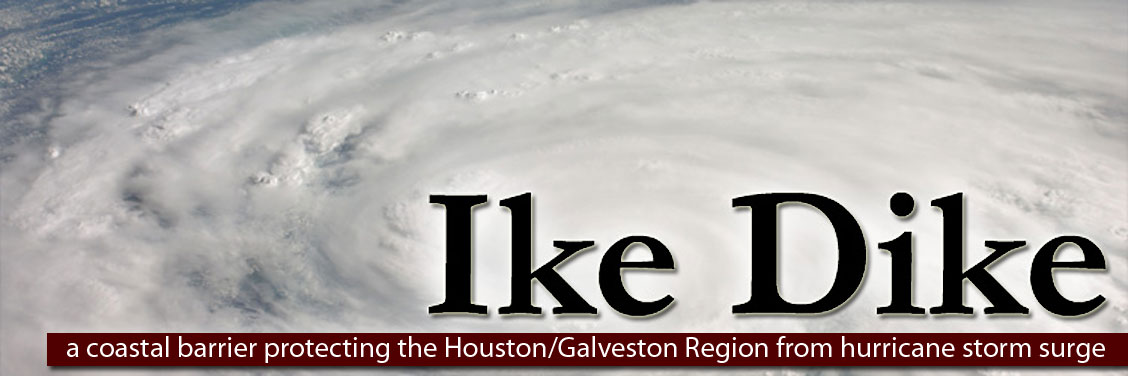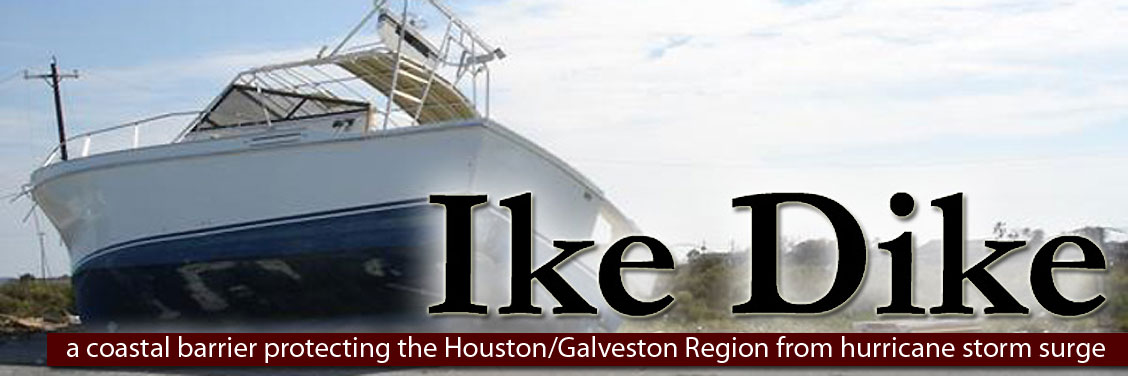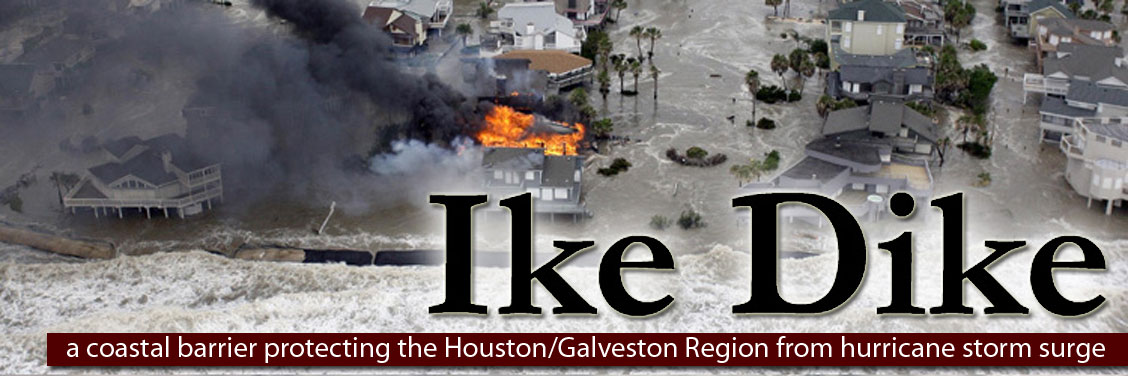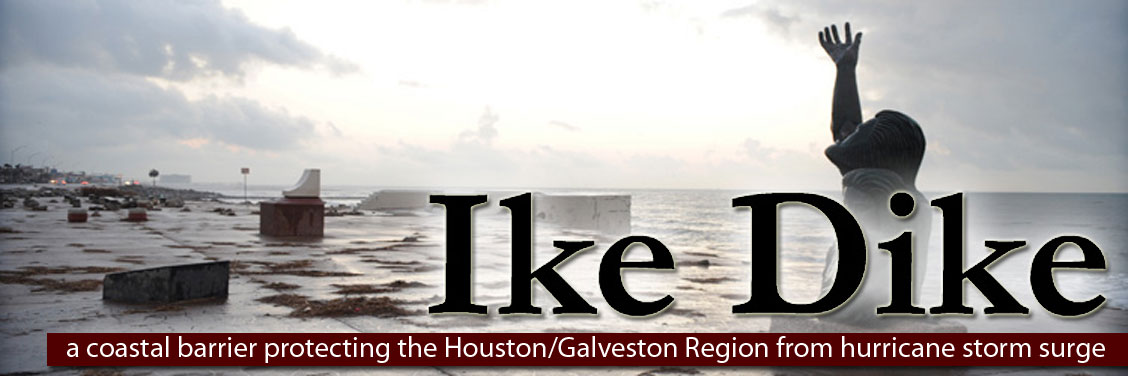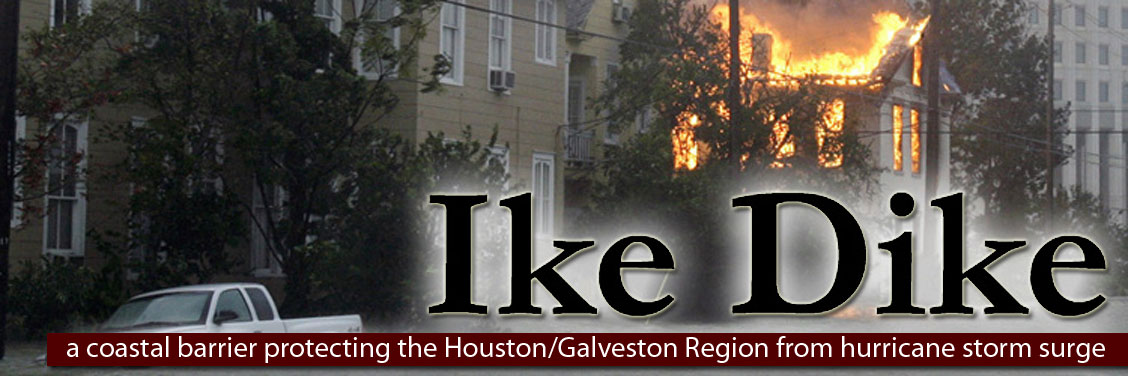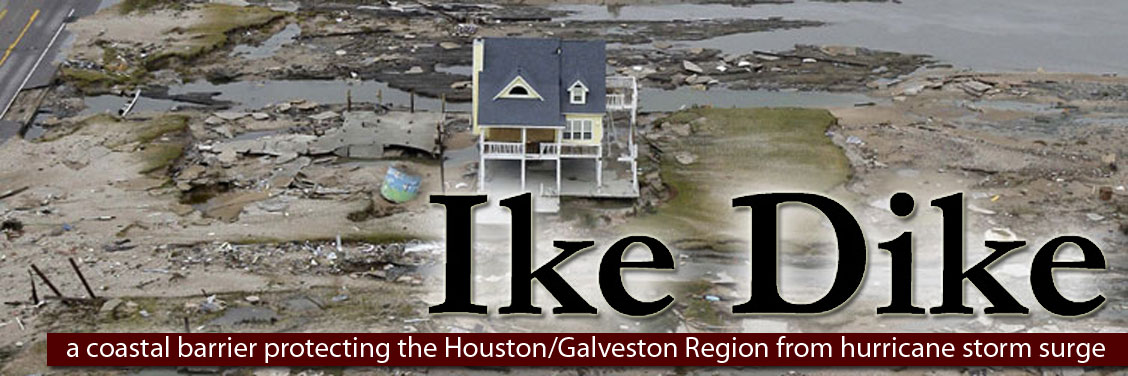Ike Dike FAQ Questions:
1. What is the Ike Dike?
The Ike Dike is a coastal barrier that will protect the entire Houston-Galveston region, including Galveston Bay, from hurricane-induced storm surge.
2. Why do we need the Ike Dike?
In the event of a massive storm surge, the Ike Dike will protect the region against the loss of life and property damage as well as protect the natural environment. Major (Cat 3 or higher) hurricanes make landfall on the upper Texas Coast on average every 15 years; so, it is a matter of when a hurricane will hit us not if one will hit. Besides being a major population and economic center, the Houston-Galveston region is home to the nation’s largest petrochemical complex and fourth largest port. Protecting this region is in the national interest as well as in the interests of the state and local citizens.
3. Will the Ike Dike extend the Sea Wall?
No. It will, however, extend the protection afforded by the Sea Wall to the entire coast protecting Galveston Bay
4. What will the Ike Dike look like?
In addition to the existing Sea Wall, the Ike Dike would place sand-covered dunes with hardened cores on the island’s west end and on the Bolivar Peninsula. Bolivar Roads and San Luis Pass would have surge gates similar to those successfully implemented in the Netherlands that would close during storms but which would remain open otherwise.
5. How will people get access to the beach?
Beach access will not be affected. The sand covered dunes with hardened cores on Galveston’s west end and the Bolivar Peninsula will look natural and be easily passable.
6. How long will it take to construct? How much will it cost?
The Ike Dike could be completed within 2 years after construction starts at an estimated cost of between $4B and $6B. In comparison, the Greater New Orleans Surge Barrier took about 2.5 years to construct and cost about $15B.
7. How will it affect current homes and businesses?
The Ike Dike protects all homes and businesses in the region from hurricane storm surge. No current homes or businesses would be affected during the Ike Dike’s construction.8. Who will pay for the Ike Dike?
Based on other surge protection projects, including New Orleans, the federal government would pay for 85% of the construction costs. Local sources are required for the 15% match for construction and for maintenance, which typically runs about .5% annually of the construction costs. Thus, using previous precedent, if the Ike Dike cost $5B, the federal government would pay $4.25B and state/local sources would pay $750M.
9. Why should tax payer money be used to protect people who choose to live by the water?
The Ike Dike protects the over 5 million people who live in the region, not just those who live by the water. It also protects ports, businesses, infrastructure and critical national resources.
10. What will be the environmental impact?
The Dutch experience over the last quarter century shows that the introduction of surge gates have allowed bay systems to remain healthy. Coastal spines have the smallest possible footprint for comprehensive protection and therefore minimize the environmental impact. Also, because the protection is placed on the wet beach, there is no loss of wetlands, and the Galveston Bay’s shores are not affected.
11. FEMA has mitigation and recovery programs for the aftermath of storms. How will the Ike Dike model differ from FEMA’s recovery programs? Can FEMA money be used?
Yes, FEMA money can be used. However, FEMA tends to be more focused on recovery after disasters rather than more cost effective strategies and preventative measures such as the Ike Dike and the New Orleans Barrier.
12. Will the Ike Dike prevent water from draining during a tropical storm or torrential rain?
No, the flood gates at Bolivar Roads and San Luis Pass will not be closed during a tropical storm or rain event. Typically, slower moving and/or weaker storms do not pose a surge threat.
